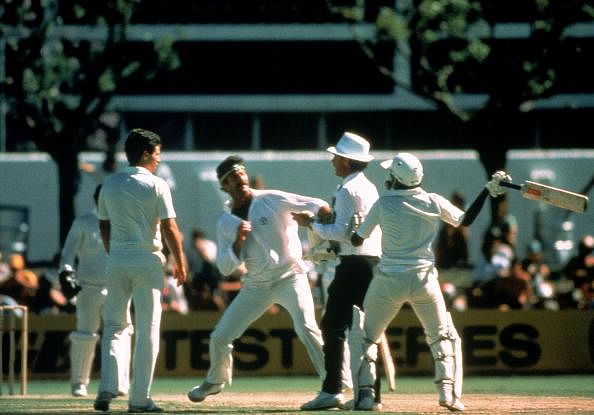
Cricket badly needs gentlemen back on the field
New Delhi, Feb 7 (IANS) Cricket was once known as the gentleman’s game, the sport for the bourgeoisie, for the cultured men. Modern cricket, however, is all about cut-throat competition and dogfights. On-field altercations, match-fixing and outrageous fan behaviour have made the game not so gentlemanly.
Long gone are the days when every beautiful shot was greeted with a cultured applause at Lord’s. The muffled sound of clapping has now been replaced by throaty abuse, boos and hooting with accompaniments like drums and cymbals, leaving the ‘vuvuzelas’ of FIFA 2010 World Cup fame soundless.
So much so even the dressing rooms have become noisy and argumentative. The result is players are getting reprimanded and disciplined.
The handling of players has become a major problem for coaches and managers. They have found the easy way out: Sack the player – like the England and Wales Cricket Board (ECB) did in the case of easily their best batsman Kevin Pietersen because the team management could not handle him.
There have been any number of instances when the very existence of the sport has come under strain. The earliest is the Bodyline series (1932-33) between England and Australia where the on-field rivalry turned ugly.
The English pacemen, under instructions from their captain Douglas Jardine, tried to terrorise that prolific run-getter, Donald Bradman, with persistent short-pitched bowling aimed at the batsman’s body.
Things got so bad that only prime ministerial intervention prevented the infamous series from descending into a full-scale diplomatic war.
From then on cricket has never been the same and Australian captain Michael Clarke‘s threat to break England pacer James Anderson‘s arm in the first Ashes Test late last year only reinforced the belief.
Clarke was overheard on the stump mike telling Anderson to “get ready to have your f****** arm broken”. The Australian captain was fined 20 percent of his match fee and the situation was brushed under the carpet by the Australian camp as being “banter” and “part and parcel of the game”.
During the summer Ashes, England pacer Stuart Broad decided not to walk after his thick edge carried the ball to first slip Clarke on the third day of the first Test.
Broad stood his ground seeing the umpire unmoved. Like a good actor, Broad’s poker face fooled everyone except the Aussies who were flabbergasted by umpire Aleem Dar’s shocker.
Batsmen walking after snicking a ball is a rarity today in a sport prided as being cultured.
Of course, there are exceptions! Cricketers like Adam Gilchrist and Rahul Dravid who gained the reputation as walking evangelists.
The Australian wicketkeeper batsman is the true proponent of walking, having done it on numerous occasions, even when he was in sight of a hundred.
Dravid, too, did it at Lord’s in his debut Test when he walked at 95, the stump mike failing to catch the faint snick. The umpire shook his head not able to notice even the slightest of deviation of the ball. Yet, Dravid chose to walk.
The ungentlemenly acts have encroached on to the field of play because of the huge money involved in the game and no one wants to sacrifice his wicket for fear of missing out on big bucks. They are willing to suffer sledging than being morally correct.
How can one forget the incident between Michael Slater and Dravid in the first Test of Australia’s 2001 tour?
Slater’s rant began after his appeal for a catch against Dravid was turned down by the third umpire.
In what cricket pundit the late Peter Roebuck described as “Slater’s moment of madness”, the Australian opener walked up to umpire S. Venkatraghavan and argued the decision with him and then turned to Dravid and exchanged words with him that obviously didn’t involve asking what he had for breakfast.
Cricket has constantly been marred with unsportsmanlike conduct and India has not been averse to it.
In Melbourne in 1981, India’s famous series-levelling win was marred by Sunil Gavaskar’s decision to march off the field with fellow opener Chetan Chauhan in response to an lbw decision against him by umpire Rex Whitehead.
Thankfully, India’s manager Shahid Durrani quickly doused the fire sending Chauhan back to the middle.
And how can one forget the dreaded ‘Monkeygate’, when Indian spinner Harbhajan Singh was accused of racially abusing Australian all-rounder Andrew Symonds.
Despite the increasing use of technology and stricter laws to punish the culprits, cricket still suffers from behavioural problems and Pietersen is the latest victim. He is unlikely to be the last.
(Santosh Rao can be contacted at santosh.r@ians.in)